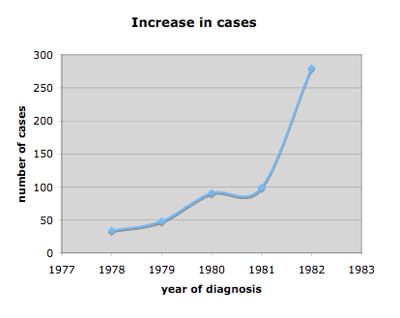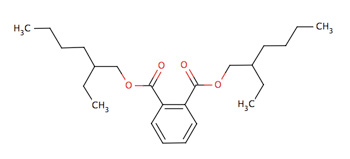- Explain what causes puberty and what might cause precocious puberty
- Discuss evidence on the possible increase of precocious puberty and its causes
- Discuss methods in epidemiology, and the difference between statistical and biological significance
In this session students will evaluate data on precocious puberty and try to find its underlying causes. Read this to the class or discuss it in your own words with them. Be sure that you cover these points: what causes normal puberty; the technical terminology of puberty; is a statistically significant difference in average age at puberty of 3, or 6 months biologically significant? Emphasize the huge difference in the cases in PR where girls were developing at less than 2 years.
Data for the last several centuries indicates that in western societies the age at puberty has been decreasing, usually as a correlate of economic development and nutrition. This trend however, seems to have reached a plateau in the 1940’s. Members of different ethnic and socio-economic groups may have different developmental timings, as well as differences in the relationship between the ages of male and female puberty. This obviously complicates the analysis of data from a multicultural society.
In female sexual development the onset of breast development is defined as telarche, and the onset of menstruation as menarche. Since these markers are more apparent than the enlargement of testicles (gonadarche) that signifies male development, most of the studies on patterns and trends in the timing of puberty have focused on female development. In the U.S. the average age at thelarche is between 12 and 13 years. The average for African Americans is about 6 months younger.
In the last thirty years physicians in Puerto Rico have described an alarming rise in the rate of premature thelarche (PT) or early sexual development (ESD). Between 1969 and 1998 there have been 6,580 cases of ESD, of which 4,674 (71%) were cases of PT. The overwhelming majority of these cases were in children younger than two years of age. This data puts the rate of incidence among 6-24 month old females in Puerto Rico at 8 per 1000 live births, about 18.5 times higher than in the rest of the U.S., and the highest recorded worldwide.
 CAPTION: The number of cases of premature thelarche
increased dramatically over a short period of time.
CAPTION: The greatest number of girls showing premature thelarche
were less than two years old,
suggesting that their exposure might be prenatal.
CAPTION: Increasing incidence of premature thelarche in the Central Region of Denmark.
Credit: Mia Elbek Sømod, Esben Thyssen Vestergaard, Kurt Kristensen & Niels Holtum Birkebæk, Int J Pediatr Endocrinol. 2016; 2016: 4.
Read these sections or have one of the students read them out loud. One interesting point to make is that scientists regularly do things that would be considered unacceptable behavior in others--looking at hundreds of pictures of nude children, guillotining rabbits, cutting up dead bodies...
It is also important to make sure they understand the strengths and weaknesses of the epidemiological approach to research, i.e. what it can tell us that other sorts of studies can’t, but its limited ability to speak to causation.
Measuring sexual development
The Tanner stages were developed using photographs of hundreds of nude children. They focus on secondary sexual characteristics (breast or male genital development, pubic hair), scoring for each category with a number (1-5).
Methods in epidemiology
One of the weaknesses of epidemiological studies is that they usually can only identify associations between variables, and therefore are weak on establishing causation. For example, if you conduct a study showing that people who eat lots of donuts have a high rate of heart disease (association), the inference that donuts cause heart disease (causation) is tenuous, because donut eaters may be more likely to smoke, drink coffee, or be overweight, any of which might be the primary cause of heart disease. One way to eliminate secondary associations as variables is to “match cases.” This means that you match a case (an individual who is a donut eater) with a control (a person who in all other ways is the same except doesn’t eat donuts). This is called a case-controlled or case matched study. Another way to strengthen an association result is to a establish a mechanism by which the variable of interest might cause the result. Like in a criminal case, circumstantial evidence can be damning. For example, we have only epidemiological studies to show that smoking is dangerous, but we also have experimental data showing that many of the chemicals in cigarette smoke cause cancer in vivo and in vitro.

CAPTION: Diethylhexyl phthalate (DEHP) is a common phthalate used in the production of plastics.
CREDIT: PubChem, National Library of Medicine.
Do these studies conclusively show that phthalates are the cause?
In 2000 a research team found phthalates in the blood of 68% of girls presenting with PT, and 14% in the control samples; this difference was statistically significant. Phthalates are used to make plastics (like PVC) more flexible, and are additives in cosmetic products and pesticides.
More recently, studies have shown an association between concentrations of phthalates in a mother’s urine and feminization of her male infant, and that the effective levels of phthalate exposure a much lower than the EPA’s reference doses, and at least a quarter of the population may experience this level of exposure. Children are very sensitive to sex steroid levels; since their endogenous hormone levels are very low a small variation can result in a large response.
Although many investigators have claimed to find a trend toward younger ages at puberty, the evidence is not yet clear. Studies making competing claims often have very different methodologies. Diet, ethnicity, and body mass index can influence the age at puberty, and as migration and development mix groups, and change diets, the patterns change.
Case Assignment
Examine the scientific literature on Epigenetics and estrogens and answer the following:
- What pattern is there in the data on age at puberty? Is it happening earlier now than in the past? Are there particular places where it is happening earlier or later?
- What evidence is there to support the claim that environmental chemicals are causing early puberty? How good is the evidence? Does it convince you?
- What are the methods used to define development and puberty? What methods are used to define how male or female an individual is? Explain the different methods used and their advantages and disadvantages?
- What are the methods used to define development and puberty? What methods are used to define how male or female an individual is? Explain the different methods used and their advantages and disadvantages?
- Describe an investigation you would conduct to clarify the role of phthalates in causing early puberty.
References
- Colon, I. et al. 2000. Identification of phathalte esters in the serum of young Puerto Rican girls with premature breast development. Environmental Health Perspectives 108(9):895-900.
- Lee, PA, Guo, SS, and Kulin, HE. 2001. Age of puberty: data from the United States of America. APMIS 109:81-88.
- Lottrup, G. et al. 2006. Possible impact of phthalates on infant reproductive health. International Journal of Andrology 29:172-180.
- Marsee, K. 2006. Estimated daily phthalate exposures in a population of mothers of male infants exhibitng reduced anogenital distances. Environmental Health Perspectives 114(6):805-809.
- Parent, AS. et al. 2003. The timing of normal puberty and the age limits of sexual precocity: variations around the world, secular trends, and changes after migration. Endocrine Reviews 24(5):668-693.
- Shettler, T. 2006. Human exposure to phthalates via consumer products. International Journal of Andrology 29:134-139.
- Swan, SH. 2005. Decrease in anogenital distance among male infants with prenatal phthalate exposure. Environmental Health Perspectives 113(8):1056-1061.
|